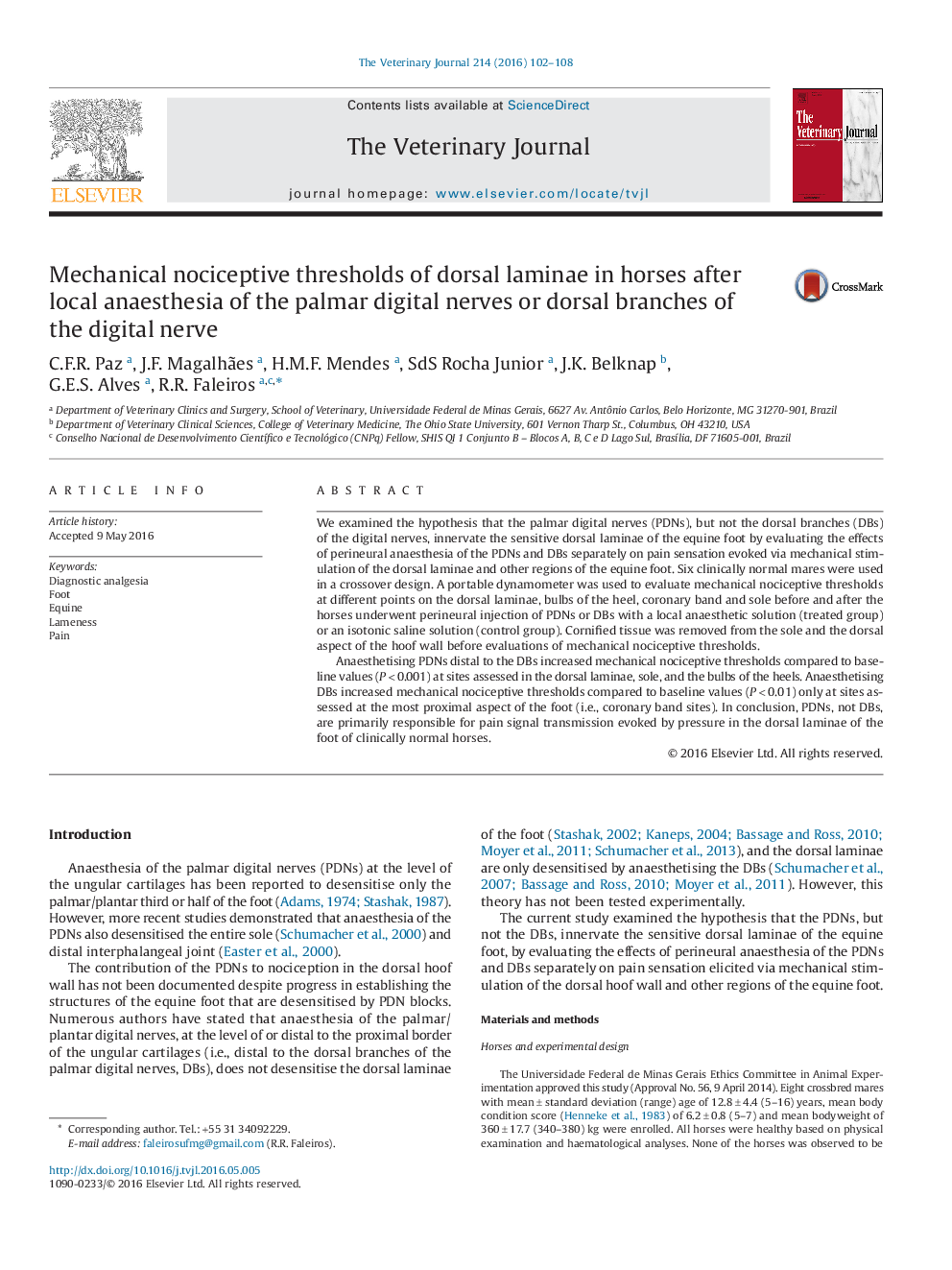| کد مقاله | کد نشریه | سال انتشار | مقاله انگلیسی | نسخه تمام متن |
|---|---|---|---|---|
| 5797243 | 1555229 | 2016 | 7 صفحه PDF | دانلود رایگان |
- The role of the palmar digital nerves in dorsal hoof wall laminae sensation was in doubt.
- Laminar mechanical nociception was evaluated with or without perineural anaesthesia in clinically normal horses.
- The palmar digital nerves are primarily responsible for dorsal laminar innervation.
We examined the hypothesis that the palmar digital nerves (PDNs), but not the dorsal branches (DBs) of the digital nerves, innervate the sensitive dorsal laminae of the equine foot by evaluating the effects of perineural anaesthesia of the PDNs and DBs separately on pain sensation evoked via mechanical stimulation of the dorsal laminae and other regions of the equine foot. Six clinically normal mares were used in a crossover design. A portable dynamometer was used to evaluate mechanical nociceptive thresholds at different points on the dorsal laminae, bulbs of the heel, coronary band and sole before and after the horses underwent perineural injection of PDNs or DBs with a local anaesthetic solution (treated group) or an isotonic saline solution (control group). Cornified tissue was removed from the sole and the dorsal aspect of the hoof wall before evaluations of mechanical nociceptive thresholds.Anaesthetising PDNs distal to the DBs increased mechanical nociceptive thresholds compared to baseline values (Pâ<0.001) at sites assessed in the dorsal laminae, sole, and the bulbs of the heels. Anaesthetising DBs increased mechanical nociceptive thresholds compared to baseline values (Pâ<0.01) only at sites assessed at the most proximal aspect of the foot (i.e., coronary band sites). In conclusion, PDNs, not DBs, are primarily responsible for pain signal transmission evoked by pressure in the dorsal laminae of the foot of clinically normal horses.
Journal: The Veterinary Journal - Volume 214, August 2016, Pages 102-108
